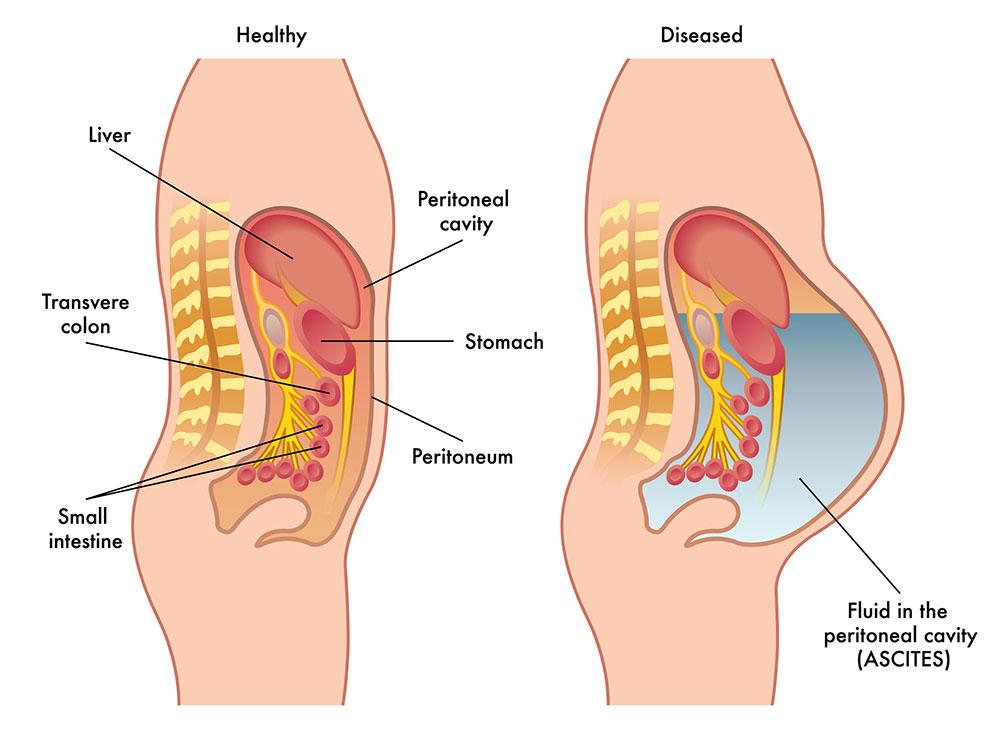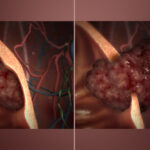Malignant ascites is a pathological accumulation of fluid in the peritoneal cavity due to cancer, often signifying an advanced stage of malignancy. It is commonly associated with peritoneal carcinomatosis and certain primary tumors, such as ovarian, pancreatic, gastric, colorectal, and liver cancers. Managing malignant ascites requires a multidisciplinary approach to alleviate symptoms and enhance the patient’s quality of life.

Causes and Risk Factors
Malignant ascites occurs due to multiple mechanisms, including:
- Peritoneal carcinomatosis: The most common cause, where cancer cells spread to the peritoneal lining, increasing vascular permeability.
- Lymphatic obstruction: Tumors may block lymphatic drainage, leading to fluid buildup.
- Portal hypertension: Liver metastases or primary liver cancer can increase pressure in the portal vein, resulting in ascites.
- Increased vascular permeability: Tumor cells release factors that disrupt endothelial barriers, leading to excessive fluid leakage.
- Hypoalbuminemia: Reduced albumin levels in cancer patients impair oncotic pressure regulation, exacerbating fluid retention.
Common Cancers Associated with Malignant Ascites
- Ovarian cancer (most frequent)
- Pancreatic cancer
- Gastrointestinal malignancies (stomach, colorectal)
- Liver cancer (Hepatocellular carcinoma)
- Breast cancer
- Lung cancer
Symptoms and Clinical Presentation
Patients with malignant ascites may experience:
- Abdominal distension and bloating
- Pain and discomfort
- Shortness of breath due to increased intra-abdominal pressure
- Early satiety and loss of appetite
- Nausea and vomiting
- Fatigue and weakness
- Lower limb swelling (secondary to venous compression)
Diagnosis of Malignant Ascites
Clinical Examination
- Abdominal inspection and palpation
- Shifting dullness and fluid wave test
Imaging Studies
- Ultrasound: Effective for detecting fluid accumulation
- CT Scan: Evaluates peritoneal carcinomatosis and underlying malignancies
- MRI: Used in specific cases for detailed imaging
Laboratory Analysis
- Paracentesis: Fluid aspiration for diagnostic analysis
- Cytology: Detects malignant cells
- Biochemical tests (albumin, LDH, protein levels)
- Microbiological cultures to rule out infections
Treatment and Management
Symptom Management and Palliation
Since malignant ascites often indicates advanced cancer, treatment primarily focuses on symptom relief rather than cure.
Paracentesis
- Therapeutic paracentesis is the most common procedure, offering rapid relief from discomfort.
- Risks include infection, hypotension, and fluid reaccumulation.
Diuretics
- Spironolactone and Furosemide may be used in select cases but are often less effective in malignant ascites compared to non-malignant causes.
Catheter Placement (Indwelling Peritoneal Catheter)
- Provides continuous drainage for recurrent ascites, improving patient comfort.
Oncologic Therapies
- Systemic chemotherapy may reduce ascites if the primary tumor is responsive to treatment.
- Intraperitoneal chemotherapy (used in ovarian cancer) can directly target peritoneal metastases.
- Targeted therapy and immunotherapy may be considered in eligible patients.
Palliative Care Considerations
- Nutritional support to manage anorexia and cachexia
- Pain management using opioids if necessary
- Psychosocial support for patients and caregivers
Prognosis and Survival Rates
Malignant ascites is associated with a poor prognosis, with survival typically ranging from a few weeks to months depending on the underlying malignancy and treatment response. Individualized care is crucial to maximize the patient’s quality of life.
Malignant ascites is a serious complication of advanced cancer that requires comprehensive management to relieve symptoms and enhance patient well-being. While curative options remain limited, ongoing research in targeted therapies offers hope for improved outcomes. Early intervention and a multidisciplinary approach remain key in optimizing care for affected individuals.

